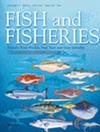The Pragmatic Sceptic: A Practical Approach for Integrating Environmental DNA Into Marine Stock Assessment and Fisheries Management
IF 6.1
1区 农林科学
Q1 FISHERIES
引用次数: 0
Abstract
The ‘omics revolution’ has advanced scientific understanding of marine ecosystems and led to a rapid increase in data that can inform species' population structure, distribution, and abundance. Of the 'omics data types, environmental DNA (eDNA) may present the most cost‐effective opportunity for developing quantitative estimates of abundance trends, a key input for stock assessment models. However, eDNA has yet to be widely adopted for stock status determinations within regional fisheries management organisations. We review progress towards addressing key challenges that limited the application of eDNA in marine fisheries management, including advances in (1) the quantitative relationship between eDNA observations and species biomass, (2) reducing false‐negative and false‐positive detections, (3) defining the spatial scale of eDNA, (4) collecting biological data from eDNA surveys, (5) quantifying uncertainty in eDNA surveys, and (6) responding to scepticism of new survey methods. We use a case study with Pacific hake (务实的怀疑论者:将环境DNA整合到海洋种群评估和渔业管理中的实用方法
“组学革命”促进了对海洋生态系统的科学理解,并导致了物种种群结构、分布和丰度数据的快速增长。在组学数据类型中,环境DNA (eDNA)可能为开发丰度趋势的定量估计提供了最具成本效益的机会,这是种群评估模型的关键输入。然而,在区域渔业管理组织内,eDNA尚未被广泛用于确定种群状态。我们回顾了限制eDNA在海洋渔业管理中应用的关键挑战的进展,包括:(1)eDNA观测与物种生物量之间的定量关系,(2)减少假阴性和假阳性检测,(3)定义eDNA的空间尺度,(4)从eDNA调查中收集生物数据,(5)量化eDNA调查的不确定性,以及(6)回应对新调查方法的怀疑。我们以太平洋鳕(Merluccius productus)为例,展示了eDNA指数的发展及其直接集成到年龄结构的种群评估模型中。鉴于eDNA在许多方面已经成熟,我们提出eDNA可以为一系列渔业管理需求提供有意义的信息,并概述了在数据有限的种群评估模型中使用eDNA的路线图,仅限数据丰富的物种。将eDNA作为种群评估模型输入进行操作的主要障碍是缺乏跨学科的研究团队,包括遗传学家、生态建模师和种群评估科学家,他们是解释跨学科的方法和结果并确保数据得到适当使用所必需的。
本文章由计算机程序翻译,如有差异,请以英文原文为准。
求助全文
约1分钟内获得全文
求助全文
来源期刊

Fish and Fisheries
农林科学-渔业
CiteScore
12.80
自引率
6.00%
发文量
83
期刊介绍:
Fish and Fisheries adopts a broad, interdisciplinary approach to the subject of fish biology and fisheries. It draws contributions in the form of major synoptic papers and syntheses or meta-analyses that lay out new approaches, re-examine existing findings, methods or theory, and discuss papers and commentaries from diverse areas. Focal areas include fish palaeontology, molecular biology and ecology, genetics, biochemistry, physiology, ecology, behaviour, evolutionary studies, conservation, assessment, population dynamics, mathematical modelling, ecosystem analysis and the social, economic and policy aspects of fisheries where they are grounded in a scientific approach. A paper in Fish and Fisheries must draw upon all key elements of the existing literature on a topic, normally have a broad geographic and/or taxonomic scope, and provide general points which make it compelling to a wide range of readers whatever their geographical location. So, in short, we aim to publish articles that make syntheses of old or synoptic, long-term or spatially widespread data, introduce or consolidate fresh concepts or theory, or, in the Ghoti section, briefly justify preliminary, new synoptic ideas. Please note that authors of submissions not meeting this mandate will be directed to the appropriate primary literature.
 求助内容:
求助内容: 应助结果提醒方式:
应助结果提醒方式:


